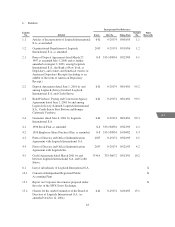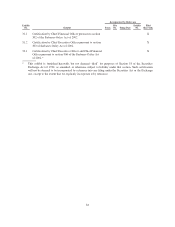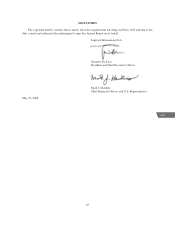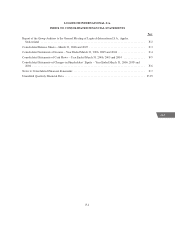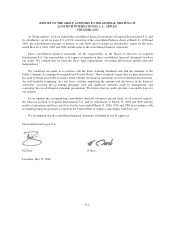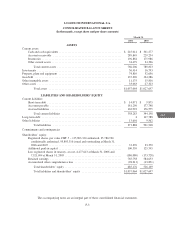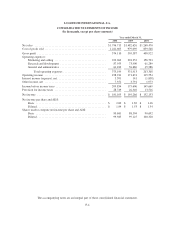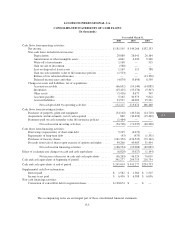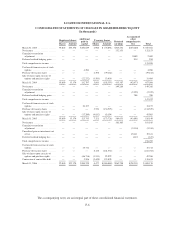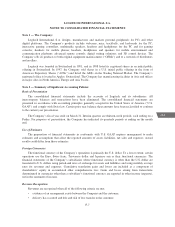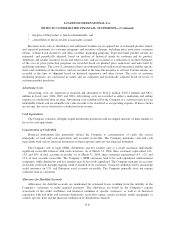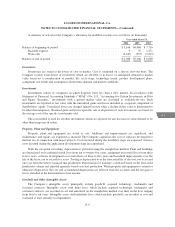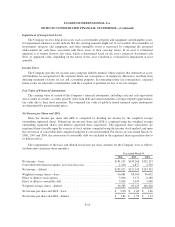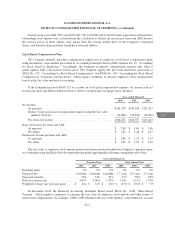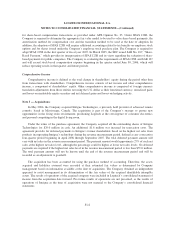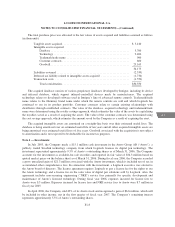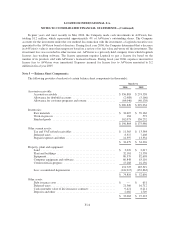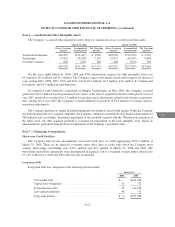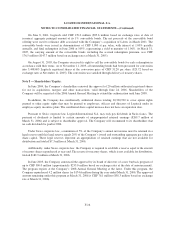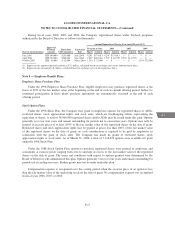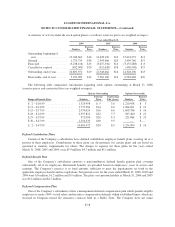Logitech 2006 Annual Report Download - page 131
Download and view the complete annual report
Please find page 131 of the 2006 Logitech annual report below. You can navigate through the pages in the report by either clicking on the pages listed below, or by using the keyword search tool below to find specific information within the annual report.LOGITECH INTERNATIONAL S.A.
NOTES TO CONSOLIDATED FINANCIAL STATEMENTS—(Continued)
• the price of the product is fixed or determinable; and
• collectibility of the receivable is reasonably assured.
Revenues from sales to distributors and authorized resellers are recognized net of estimated product returns
and expected payments for customer programs and incentive offerings, including price protection, consumer
rebates, volume-based incentives and other customer marketing programs. Expected future product returns are
estimated, and periodically adjusted, based on analyses of historical trends by customer and by product,
distributor and retailer inventory levels and other factors, and are recorded as a reduction of revenue. Estimates
of the cost of price protection programs are recorded based on planned price reductions and units held by
qualifying customers. The costs of consumer rebates are estimated based on historical experience and the specific
terms and conditions of the incentive, and are recorded at the time the incentive is offered. Volume rebates are
recorded at the time of shipment based on historical experience and other factors. The costs of customer
marketing programs are contractual in nature and are estimated and periodically adjusted based on levels of
customer product purchases.
Advertising Costs
Advertising costs are expensed as incurred and amounted to $144.2 million, $125.1 million and $82.1
million in fiscal years 2006, 2005 and 2004. Advertising costs are recorded as either a marketing and selling
expense or a deduction from revenue. Advertising costs reimbursed by the Company to a customer must have an
identifiable benefit and an estimable fair value in order to be classified as an operating expense. If these criteria
are not met, the cost is classified as a deduction from revenue.
Cash Equivalents
The Company considers all highly liquid instruments purchased with an original maturity of three months or
less to be cash equivalents.
Concentration of Credit Risk
Financial instruments that potentially subject the Company to concentrations of credit risk consist
principally of cash and cash equivalents and accounts receivable. The Company maintains cash and cash
equivalents with various financial institutions to limit exposure with any one financial institution.
The Company sells to large OEMs, distributors and key retailers and, as a result, maintains individually
significant receivable balances with such customers. As of March 31, 2006, three customers represented 14%,
13% and 10% of total accounts receivable. As of March 31, 2005, three customers represented 14%, 12% and
11% of total accounts receivable. The Company’s OEM customers tend to be well-capitalized, multi-national
companies, while distributors and key retailers may be less well-capitalized. The Company manages its accounts
receivable credit risk through ongoing credit evaluation of its customers’ financial condition and by purchasing
credit insurance on U.S. and European retail accounts receivable. The Company generally does not require
collateral from its customers.
Allowance for Doubtful Accounts
Allowances for doubtful accounts are maintained for estimated losses resulting from the inability of the
Company’s customers to make required payments. The allowances are based on the Company’s regular
assessment of the credit worthiness and financial condition of specific customers, as well as its historical
experience with bad debts and customer deductions, receivables aging, current economic trends, geographic or
country-specific risks and the financial condition of its distribution channels.
F-8


